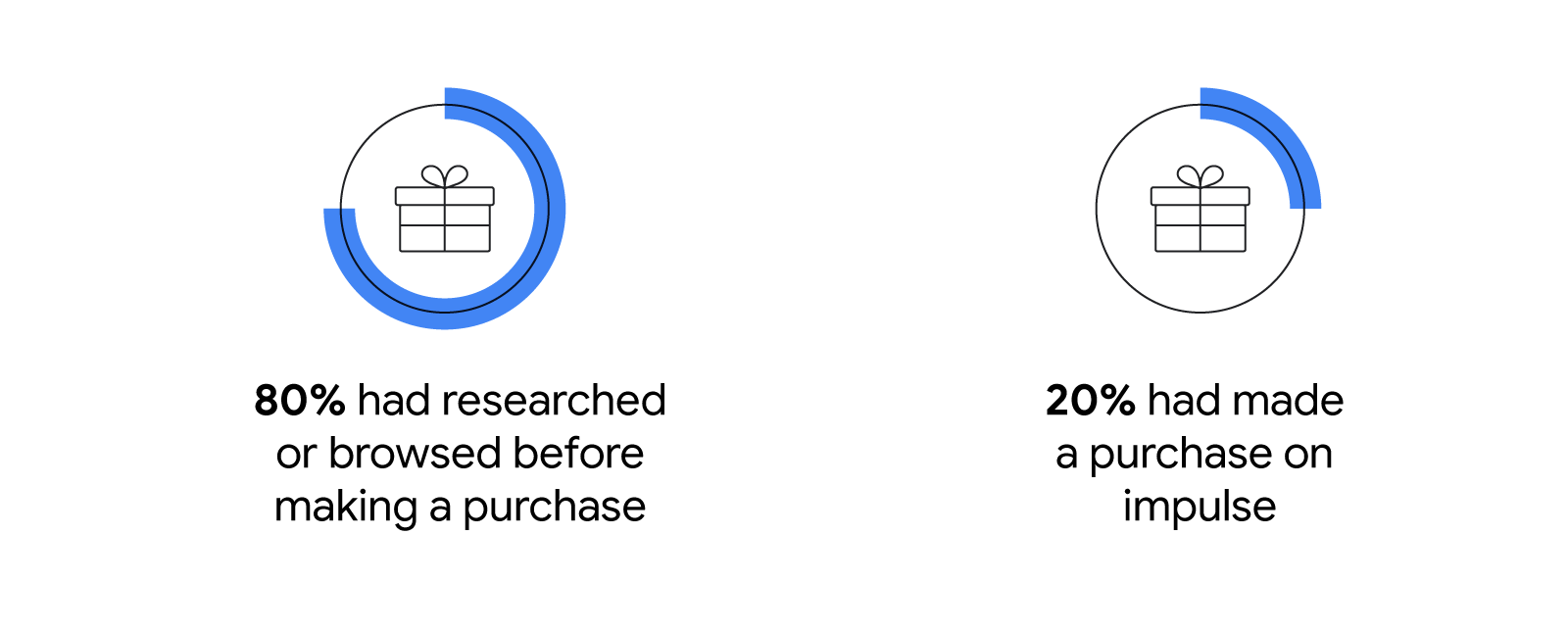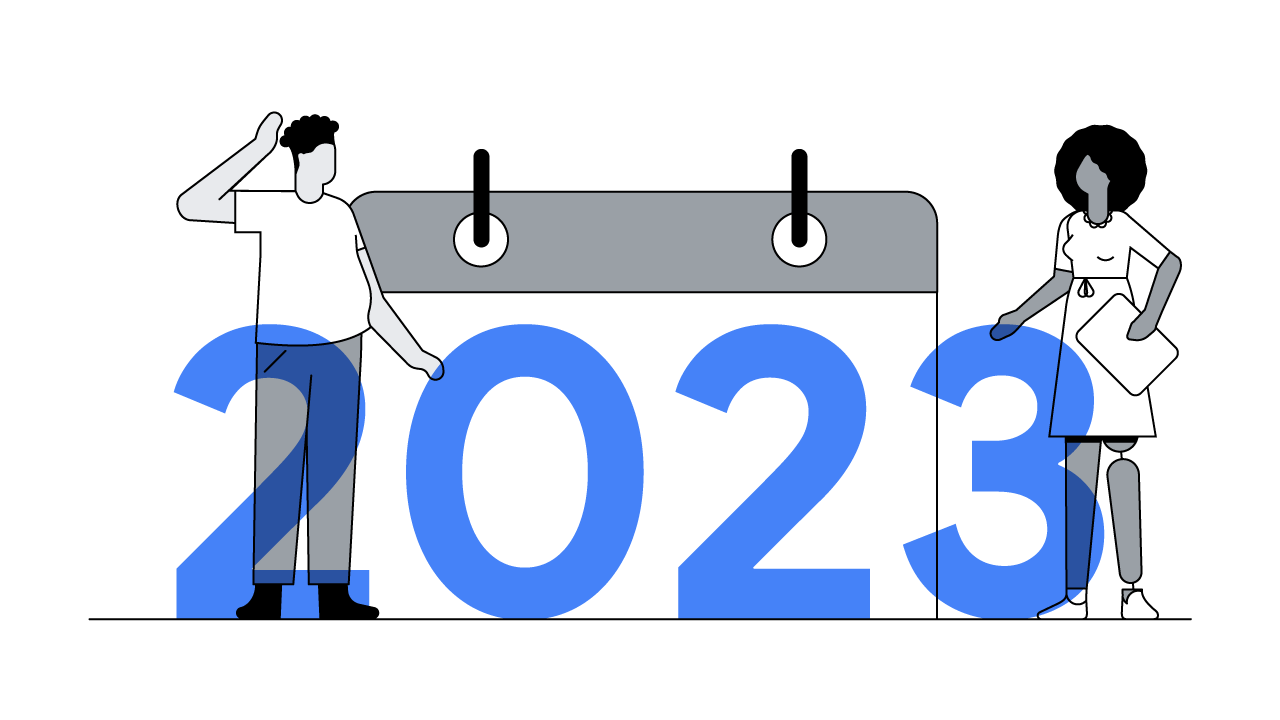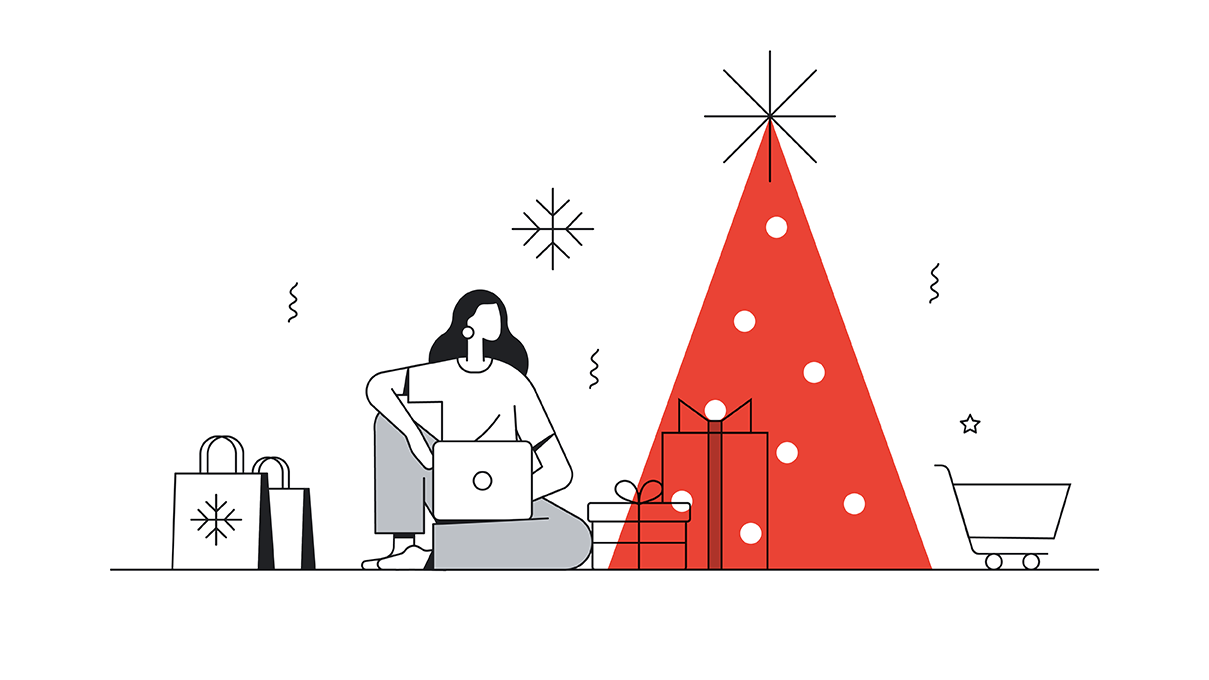Around the world, people are feeling uncertain, and that’s impacting how they shop this holiday season. In an environment where 81% of consumers have taken some action in the past two weeks to manage costs, it’s critical to understand how behaviours are changing and to use that intelligence to inform your digital marketing strategy — not just through the remainder of the holiday season but also in 2023 — as the trends we’re seeing are a reflection of economic realities that are likely to continue.1
To mitigate their feelings of uncertainty, shoppers are being more intentional about their holiday purchases and spending more time researching product options. In a study conducted by Google and Ipsos in November, 80% of holiday shoppers said they had researched or browsed before making a purchase, compared to 20% who said they had made a purchase on impulse.2 Online ratings and reviews, along with price comparisons, are the top resources they lean on to feel confident in their large purchases ahead of advice from family and friends.3
Holiday shoppers are being more intentional

Intentionality provides brands and retailers with an opportunity to reach people who are expanding their consideration set. This holiday season, more than one-third of holiday shoppers across surveyed markets say they are receptive to brands and retailers that they haven’t bought from before.4 Opportunities also exist among those who aren’t actively shopping: Almost half of those surveyed say they like to keep an eye out for new brands, even if they are not planning to buy at the moment.5 This is the time to lean in and make sure consumers are aware of what you have to offer.
Balancing price and quality
It’s no surprise that discounting has been a driving force this holiday season, as shoppers look to stretch their budgets further. Recent research shows that half of global holiday shoppers say they will choose where to buy gifts based on who has the best deals, discounts, or promotions — but other things have influence as well.6
While discounting is a powerful tool in influencing consumer decisions about both products and retailers, it’s not everything. In fact, we found that well-known behavioural science principles and related tactics — such as displaying high-star ratings or promising free delivery and returns — could surpass the effectiveness of a discount. Specifically, using the two most influential behavioural science principles within a given product category was more effective than a 10% discount in influencing choice across categories among U.S. consumers.7
These days, consumers are balancing purchase decisions on both price and quality. For example, 81% of possible Black Friday and Cyber Monday shoppers in the U.S. said getting the best prices or value is important. However, it’s also important to 80% that the items they purchase are the best quality too.8 So, while evaluating pricing and discounts is an important part of any marketing strategy, keep in mind that it’s not the only tool in your toolkit. And since many shoppers still have a majority of their shopping to complete, there’s still an opportunity to make the most of the last few weeks.
Shoppers turn to online resources
Whether shoppers are researching products or bargain hunting, digital resources are critical. Eighty-six percent of consumers in surveyed markets say online sources help them make more informed decisions.9 This season, Google continues to play a key role, with almost nine in 10 holiday shoppers across surveyed markets saying they have used Google to help with their shopping.10

As you seek to reach more people this season, you may want to tap into holiday search trends and insights that are available on the Insights page in Google Ads. These are based on your account performance, as well as searches across Google for the products and services you show ads for. Insights, when paired with automation, can help you find new customers at scale and at a cost that works for your business.
Shoppers aren’t just using digital channels to shop online; they’re also using them to inform their in-store visits. In 2021, shoppers returned to brick-and-mortar shopping at nearly pre-pandemic levels, while their use of digital channels, such as searching on a smartphone (72%), watching online video (51%), and searching maps online (32%), remained at the significantly higher levels that we saw in 2020.11 Globally, search interest in “in-store” has nearly tripled since the beginning of the year.12 To reach these local shoppers and promote your in-store inventory, use Performance Max campaigns for store goals. You can highlight your nearby stores, seasonal promotions, and fulfillment options, like curbside pickup, to shoppers already searching for stores like yours.
A new state of play
The uncertainty that has gripped shoppers this holiday season will likely continue into the new year, leading them to be more thoughtful about their purchases, to broaden their consideration sets, and to heavily use digital resources to aid their decisions throughout 2023. This new state of play presents a big challenge for brands and retailers, but it’s also an exciting opportunity to help people educate themselves and to feel confident about their purchases.







